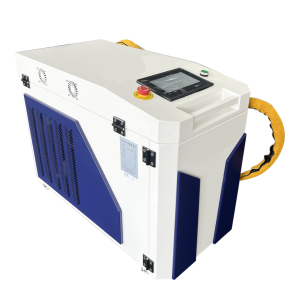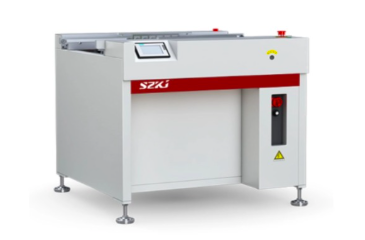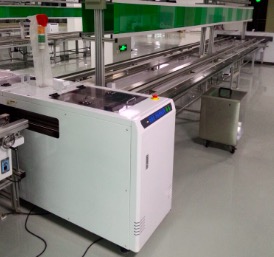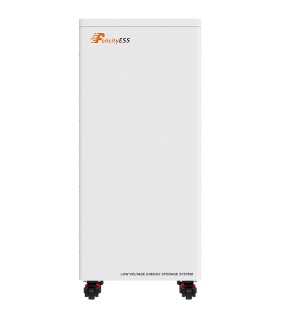目录
Laser welding systems and technology have been gaining popularity with the recent invention of laser generation technologies. Though there are many welding advantages, laser welding is not the same as other conventional welding processes. A laser weld takes a short time to complete the job, leaving permanent and robust connections between the joints.
Since there are various lasers, each with different satisfying needs and different technology and sources, it’s essential to understand the best laser welder for your business. Here is an ultimate guide to everything you need to understand about laser welders and their welding advantages.
What is welding?
Welding is a fabrication process used to join metals through fusion. Fusion is done by depending on temperature and/or pressure. Welding is a common fabrication process that can be used with materials like stainless steel or steel. There are five welded joints: lap joint, tee joint, edge joint, corner joint, and butt joint. These are just the basic welded joints, but there are still more.
Welding advantages
- It produces permanent connections.
- The connection weld is much stronger than the original material if a filler metal and the proper technique are used.
- Welding production time is less
- It has less production time and high strength
- Easy to use in many parts, unlike riveting
- Welding cost is lower, and it can be used even in the field

What is laser welding?
This process joins thermoplastics or metals by using laser beams to form a weld. Laser welding can be done at high-welding speed for thin materials, whereas in thicker materials, it produces narrow and deep welds between the square-edged parts.
Types of laser welding systems
There are two main categories of laser welders; by type of laser and by source of the laser.
Categorized based on the type of laser
Pulsed laser
Pulsed laser technology is suitable for light metals with a low thickness. It makes intermittent exposure to the material body, thus protecting it from melting and burning. Pulsed lasers are ideal for welding razors, jewelry, screws, and sheets of metals.
Continuous laser
Continuous laser is suitable for welding on parts with high thickness and robustness. This technology tends to be costlier than pulsed laser welding, but it is worth the investment and perfect to reduce labor because of its high robustness and performance.
Categorized based on the source of the laser
Three main laser welding machine types can be either: Fiber laser, CO2, and Nd: YAG laser. Each of these laser sources has different benefits and is also suitable for use on other welding materials.
CO2 Laser Welders
This welder offers continuous welding beams to create durable and efficient welds. CO2 laser quickly penetrates metals and non-metallic bodies.
Fiber laser welders
This type of laser is ideal for use on metallic parts. They are efficient and also reliable. It’s approximated that a fiber laser machine is almost 25% inaccurate.
Nd: YAG laser welders
These laser welders have come with lots of welding advantages. They offer greater laser control which is difficult to achieve through other laser source types. But, if compared with fiber laser welders, they are less energy efficient.
How does the laser welding system work?
Laser welding operates in three modes: limited conduction welding broken down to direct heating, energy transmission method, conduction/penetration mechanism, and keyhole welding. The mode by which the laser beam interacts with the material it’s welding relies on the beam’s power density hitting the workpieces.
Conduction-limited welding happens when the power density is approximately less than 105W/cm2. Laser beams get absorbed at the material surface and don’t penetrate through. The limited conduction welds exhibit a high-width to depth- ratio. Laser welding can be achieved by higher power densities via a keyhole mechanism. When the laser beam gets focused on a small spot, the material melts and vaporizes. After that, the beam penetrates the workpieces, thus forming a cavity known as a keyhole filled with metal vapor.
The expanding plasma or vapor contributes to preventing the collapse of the molten walls of the keyhole to the cavity. The laser beam coupling improves dramatically through the keyhole formation. Deep penetration welding occurs by traversing the keyhole on the welding joint that needs moving joints or welding or moving based on the laser beam.
Through the surface tension, the molten material closer to the keyhole flows through the keyhole cavity and then back. It then cools and solidifies, forming the welds. The welded cap is left with a pattern (chevron) that points backward towards the start of the welded point.
Laser welding advantages
- It’s easier to integrate laser welders with automated and computer-aided systems, thus becoming efficient and more accurate.
- The tools used do not get affected during welding.
- Laser beam focus is accurate; thus, a durable and high-quality final weld.
- It has a higher speed, unlike conventional welders making it perfect for large productions.
- It also has low input energy.
- Laser welding is a contactless method, thus increasing the machine’s durability and the quality of the end product.
- There’s no need for secondary finishing after welding there for labor time, and costs will be saved.
Bottom Line
It’s clear how effective and influential laser welding systems have in the medical, jewelry, and automotive industries. As seen above, investing in laser welding systems has many welding advantages. We hope that the guide above laser welding systems gives you enough insights on laser welding systems and their benefits.
0




